Once a glittering and debauched destination for the 1960s literary and artistic set, Tangier holds an evocative tinge of this racy past, even though it may no longer be the haunt of famed authors and painters. The medina area is the major point of interest and place to roam and try to catch some of this atmosphere. The winding lanes here are the city’s prime tourist attraction. Outside of Tangier, the coastline is dotted with picture-perfect seaside villages that make you want to break out your watercolor palette. Tangier is a great base for exploring this part of Morocco.
See also: Where to Stay in Tangier
1 Medina
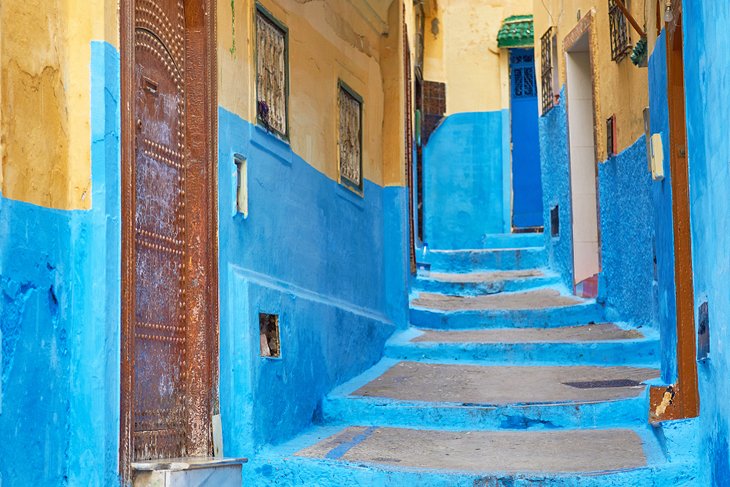
Tangier’s medina (old city) tumbles down the cliff towards the ocean in a labyrinth of narrow alleyways. The central vortex of medina life is the square known as the Petit Socco, where old men sit for hours drinking tea and playing backgammon. During its fast-paced past, the medina was a playground for author Paul Bowles and America’s legendary beatnik literary figures such as Jack Kerouac, Allen Ginsberg, and William Burroughs. Wandering around this area is a must for Tangier visitors.
Just west of the Petit Socco on Rue Siaghine is The Church of the Immaculate Conception, built by the Spanish in 1880. East of the square is the Grand Mosque. In the southeast corner of the old city is the Old American Legation, once the US consulate building and the oldest American diplomatic post. The museum inside traces the history of the relationship between the US and Morocco – as Morocco was one of the first countries to recognize American independence, the US established its legation in Tangier in 1821. The interesting exhibits inside include George Washington’s famous letter to Moulay Abdullah.
Location: Main entry off Grand Socco
Accommodation: Where to Stay in Tangier
2 Kasbah
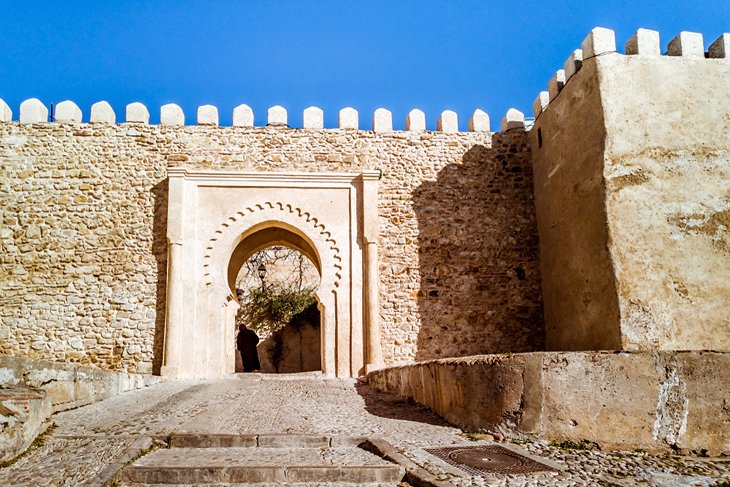
The Kasbah, where the sultan once lived, dominates the medina’s northern section. The gate opens onto a large courtyard, which leads to the Dar el-Makhzen Palace and the modern-day Kasbah Museum. The palace was built in the 17th century and enlarged by each reigning sultan. The carved wooden ceilings and marble courtyard showcase the intricacies of Moroccan craft-work. Also in the Kasbah is the infamous Cafe Detroit, which became a haunt for the visiting and expat writers, artists, and hangers-on in the 1960s.
Location: Main entry off Rue Tabor
3 Kasbah Museum
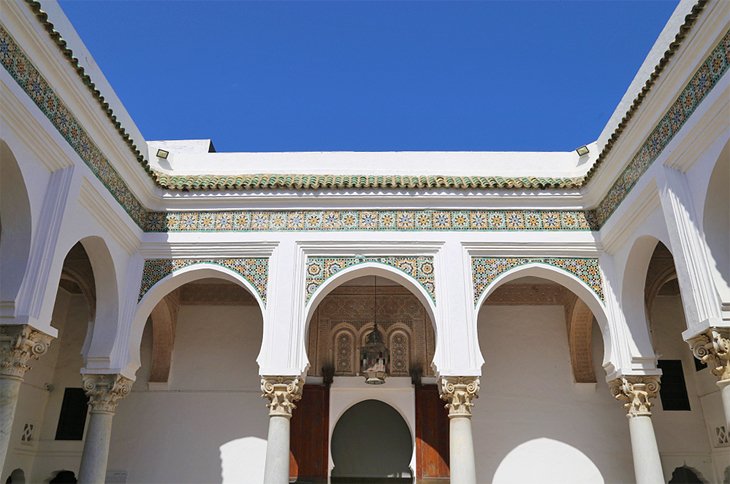
History lovers should definitely put the Kasbah Museum on their Tangier things to do list. The museum brings together an amazing number of exhibits tracing Morocco’s tumultuous and complicated history. The Antiquities Collection brings together finds from the country’s prime ancient Roman sites such as Lixus and Volubilis and includes a life-size model of a Carthaginian tomb. There are also displays explaining Tangier’s history and a large section devoted to Moroccan arts. The Fes Room is particularly interesting, containing silks and illustrated manuscripts as well as centuries-old ceramics decorated from golden yellow to the famous Fes-blue.
Address: Rue Riad Sultan, Kasbah
4 Ville Nouvelle
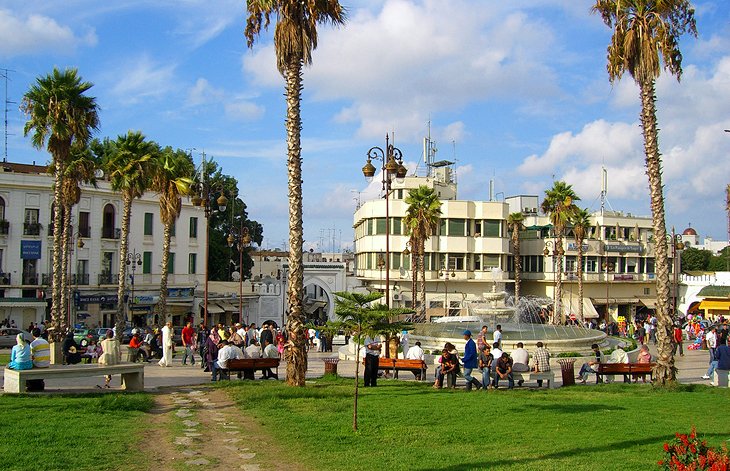
Tangier’s ville nouvelle (new city) is a must for fans of late 19th- and early 20th-century architecture as it features many fine buildings from this time period. Here, you’ll find the Terrasse des Paresseux (Terrace of the Idle), where you can look out at the spectacular ocean view that has captivated so many European artists. With the harbor before you, look across the water for the hazy silhouettes of Gibraltar and southern Spain in the distance.
The Grand Socco (the main square) marks the end of the new city and entry to the medina. This is where Tangier locals come to stroll, play, and sit in the surrounding cafes for hours. Just to the square’s north is the Mendoubia Gardens, a shady spot full of fig and dragon trees.
5 Beach
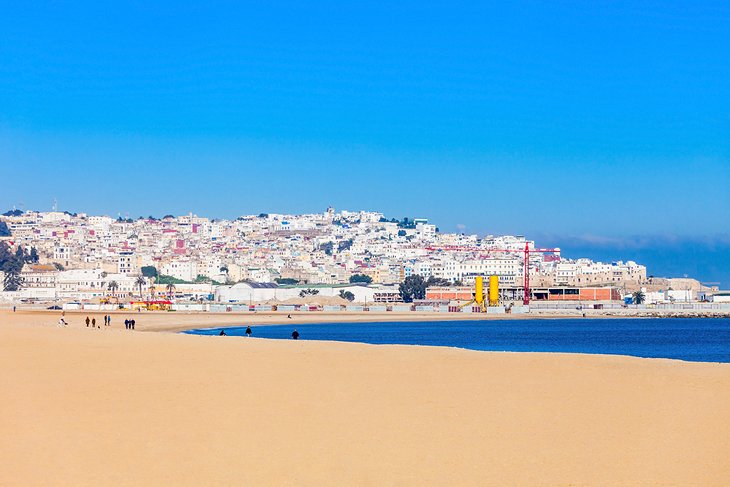
Tangier’s beach side district is intrinsically linked to the city’s heady 1960s, when the beautiful and louche literary residents made this one of the world’s most famous strips of sand. Its heyday is now long gone, but the beach area is still a good place for a stroll with plenty of locals promenading and playing football along its length. Swimming here is unfortunately not a good idea as the water isn’t very clean, but if you just want to get some sea air, stretch your legs, and take in a bit of local life, it’s worth a visit.
Location: Off Avenue Mohammed VI
6 Cap Spartel
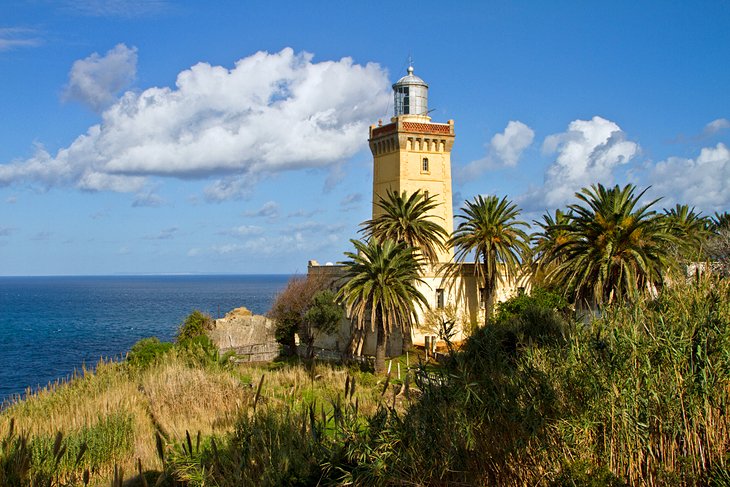
Geography fans won’t want to miss this Tangier side trip. Cap Spartel marks Africa’snorthwest tip. The promontory projects into the water, marking the boundary of the Mediterranean Sea with the Atlantic Ocean. For atmosphere, the best time to come here is at sunset, when you can see dusk settle over the Atlantic. The lighthousehere, at the tip of the promontory, is especially photogenic, and there’s a great cafe next door where you can grab a coffee or a juice and take in the sea views.
Location: 11 kilometers west of Tangier
7 St. Andrew’s Church
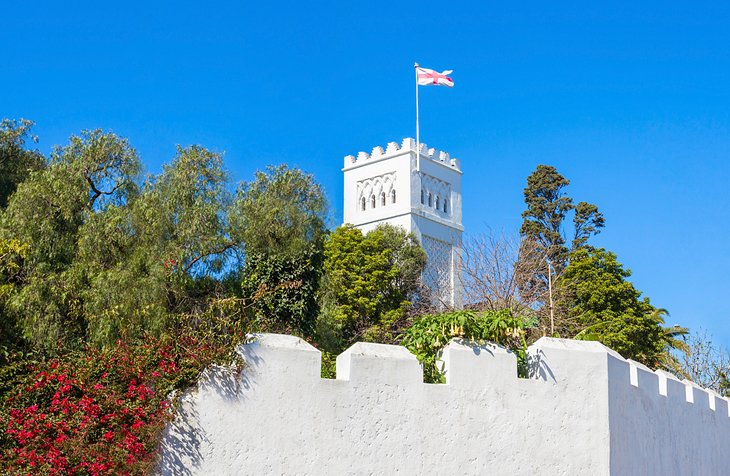
Built in 1905, this Anglican church is one of Tangier’s more relaxing spots and is a great place to visit if the hustle of the city is grinding you down. The still functioning church has a tranquil and rather stark interior, while the small cemetery outside contains interesting tombstones from the early 20th century. If you’re in Tangier on a Sunday, you can catch a morning service here, or at other times simply knock on the door, and the caretaker will open the church up for you.
Address: Rue d’Angleterre
8 Asilah
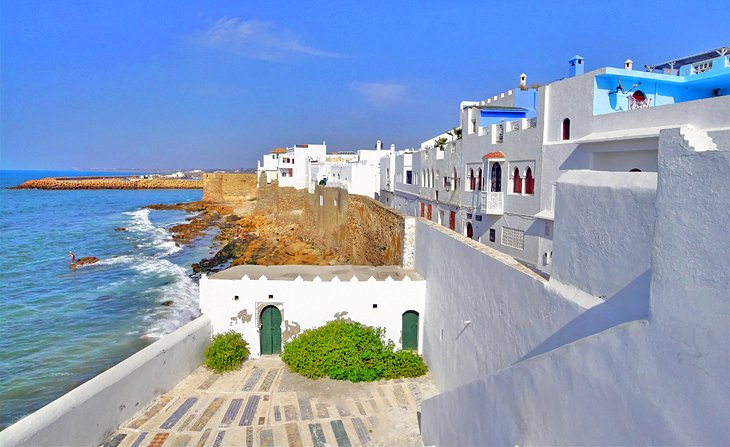
The little town of Asilah, on the northwest tip of Morocco’s Atlantic coast, has a history that stretches back to the Roman era. More recently, it has been under the control of both Spain and Portugal. But the town’s imposing ramparts, with surviving bastions and towers, now offer a setting for delightful seaside walks. The Portuguese fortifications enclose an old town of pretty white-and-blue-washed houses with a distinctive Mediterranean feel. The town is also famous for fried seafood dishes. Restaurants line the shore, making a great place to put your feet up while you sample some fish.
Location: 40 kilometers from Tangier
9 Larache
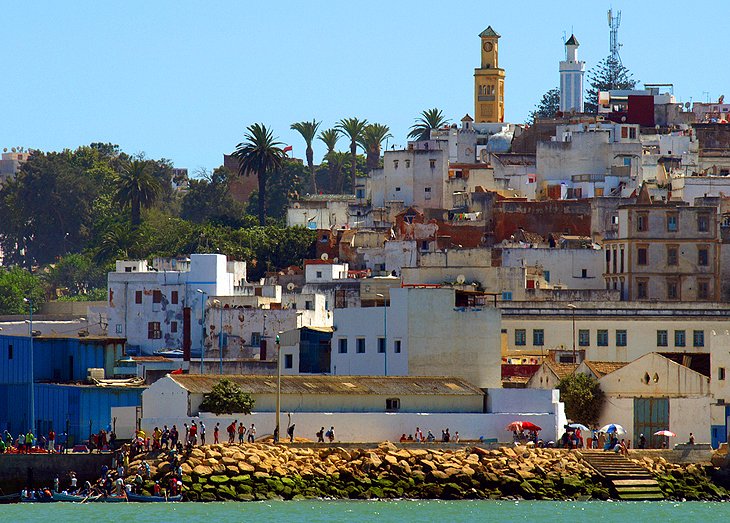
The seaside town of Larache is the closest settlement to the Lixus archaeological site, where Greek legend tells that Hercules gathered the golden apples. The site was a trading center for first the Phoenicians, then the Carthaginians, and finally the Romans, but its history is thought to be much older than these conquerors. The ruins include a temple, theater, acropolis, and baths, and although the site is overgrown, it’s highly atmospheric. Back in town itself, Larache’s Archaeological Museum is housed in the Chateau de la Cigogne. The museum contains a collection of finds unearthed from Lixus, including an interesting display of perfume bottles and jewelry.
Location: 88 kilometers south of Tangier
10 Ceuta
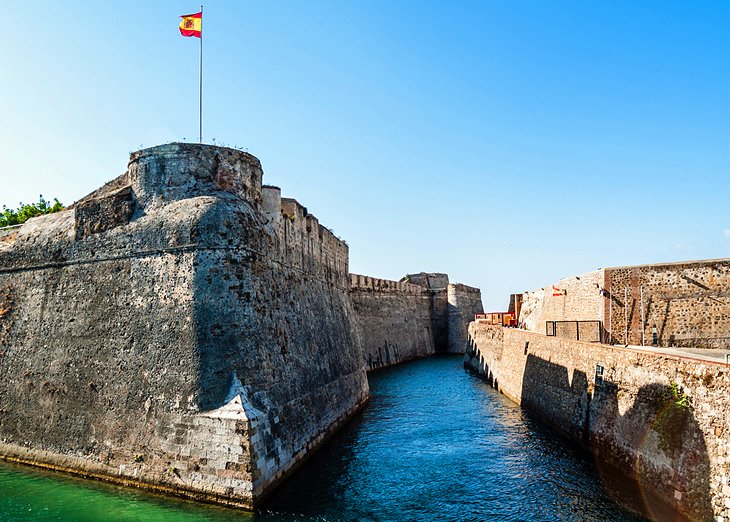
Spain’s little piece of Morocco, this oddity of a town is a major transport hub with ferries across the sea to Algeciras. The old fortifications (built by the Portuguese) around the San Felipe Moat are the town’s main sight, but the Ceuta Museum is also worth a look for its well-displayed collection of Punic and Roman finds. Those with an interest in religious art and architecture should also visit Ceuta’s main square – home to the interesting Cathedral Museum and the 15th-century Church of Our Lady of Africa.
Location: 79 kilometers east of Tangier
11 Melilla
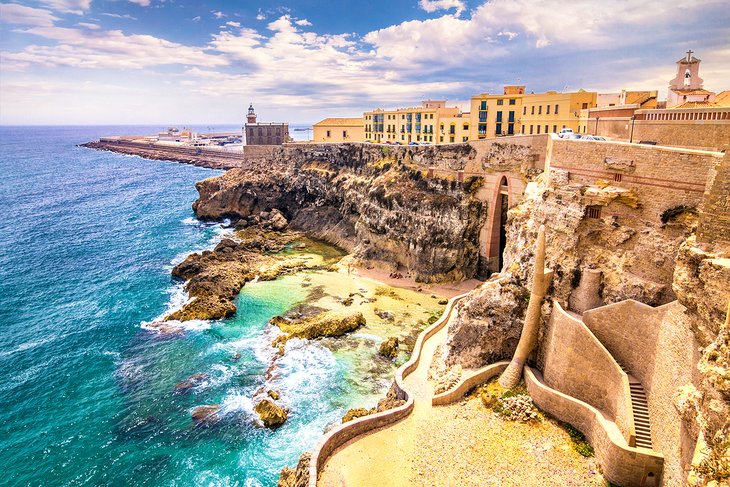
Melilla’s fortified medina is the main focus of most of the town’s sightseeing. Along with Ceuta, Melilla is a Spanish enclave on Moroccan soil; the last remaining bits of land that Spain refused to give back to Morocco after independence. The museumhere is worth a look for its interesting archaeological section. There is a 17th-century cathedral here as well. At nearby Three Fork’s Cape, gaze out over the perfectly turquoise waters. From the lighthouse, you can see many small beaches and great blocks of anthracite rise out of the waters.
History
According to Greek mythology Tangier, or Tingi, was founded by the giant Antaeus. Tingi is mentioned by Carthaginian travelers as early as 500 BC, and Phoenician sailors visited even earlier. After the destruction of Carthage, Tingi was affiliated with the Berber kingdom of Mauretania. It then became an autonomous state under Roman protection, eventually becoming a Roman colony in the 3rd century AD during the reign of Diocletian, and ending as the capital of Mauretania Tingitana. In the fifth century, Vandals conquered and occupied Tingi and from here swept across North Africa.
A century later, Tingi became part of the Byzantine Empire and gradually fell into obscurity until the city’s capture by Moussa bin Nasser during the first years of the eighth century. The city’s inhabitants were converted to Islam, but many Berber tribes joined the schismatic Kharijite rebellion and seized the port city in AD 739. When Moulay Idriss I established his kingdom at Volubilis in AD 788, Tangier became a focal point in the struggle between the Idrisid dynasty and the Umayyads. This struggle continued until the Fatimid dynasty from Tunisia assumed power in AD 958.
Tangier came under the successive sway of the Almoravides and Almohades, after which the city fell under the influence of the Tunisian Hafsid dynasty before passing into the hands of the Merenids. By the 14th century, Tangier became a major Mediterranean port frequented by European trading vessels bringing cloth, spices, metals, and hunting birds in exchange for leather, wool, carpets, cereals, and sugar. After an unsuccessful attempt to seize Tangier in 1437, the Portuguese finally conquered and occupied the city in 1471, converting the great mosque into a cathedral. For nearly three centuries, the town was passed back and forth between the Spanish, Portuguese, and finally the English, when it was given to Charles II as part of the dowry from Catherine of Braganza.
The English granted Tangier a charter, which made the city equal to English towns. In 1679, Moulay Ismail made an unsuccessful attempt to seize the town but maintained a crippling blockade, which ultimately led to a British retreat. Under Moulay Ismail, the city was reconstructed to some extent but gradually declined until, by 1810, the population was no more than 5,000. Tangier began to revive from the mid-19th century, when European colonial governments fought for influence over Morocco.